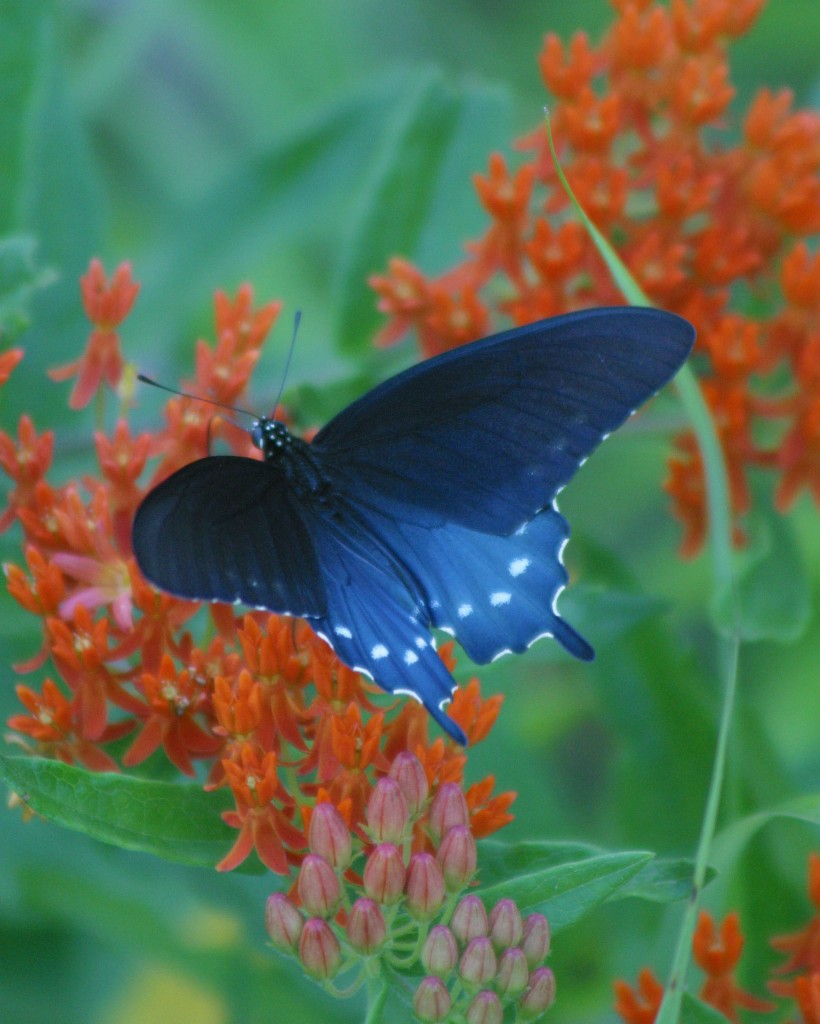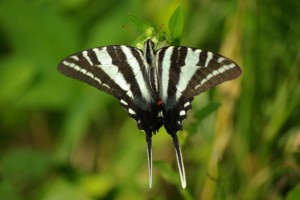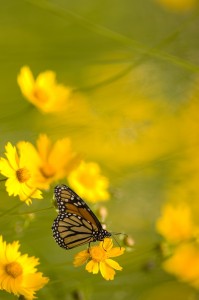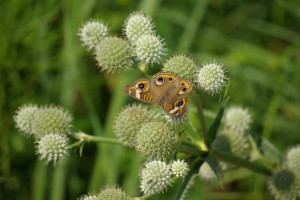Our Bluff Lands Provide Perfect Habitat for Nature’s Jewels: Butterflies.
Butterflies, alighting on one flower and then another, have long fascinated and delighted humans with their diverse and gorgeous colors. Butterflies are nature’s jewelry. Legend has it that the name butterfly came from ancient Britain, where people likened yellow brimstone butterflies fluttering in woodlands in early spring to butter flying.
The astounding transformation of butterflies from earthbound caterpillars to winged adults has always captured people’s imagination. But it was not until the last 200 years that people even suspected there was a connection between the two. Early naturalists thought that butterflies and caterpillars were separate creatures. From Roman times to deep into the late Middle Ages it was adamantly believed that caterpillars came from the morning dew on tree leaves.
The wonderful feature of butterflies is that they are widespread and that you can easily attract them to your own backyard. All you need to do is provide plants on which caterpillars can feed and flowers from which adults can sip nectar.
But herein lies the important lesson to help with the conservation of butterflies. Each species of butterfly caterpillar depends on a particular family of plants, or even one or two species of plants, on which to feed. If the plants aren’t present, there will be no caterpillars and no butterflies of that specific plant-dependant type.
Our bluff land’s stunning, abundant, and easily recognized constellation of swallowtail butterfly species serves to illustrate plant dependency. Pipevine swallowtail caterpillar larvae will only feed on Virginia snakeroot or woolly pipevine plants. Giant swallowtail caterpillars will only feed on ash species. Tiger swallowtail caterpillars need wild black cherry, apple, poplar, or maple trees. Only sassafras trees or spicebush can support spicebush swallowtail larvae. Black swallowtail caterpillars can only survive on plants of the carrot family. And, zebra swallowtail caterpillars must have pawpaw trees.
This plant-dependency reality is a sad contributor to the collapse, and possible eradication, of monarch butterflies, Illinois’ State Butterfly. Monarch caterpillars must feed on milkweed family plant species. The decline of milkweed in gardens, in natural areas, and along roadsides and field edges is bringing the species to the brink of extirpation. The twice-annual multi-generational migration of monarch butterflies to and from their wintering grounds in Mexico and across the Eastern U.S. and Canada – a migration likened as every bit as awe-inspiring as that of mammals crossing Africa’s Serengeti Plains – may soon end forever.
The monarch’s plight is making people think that butterflies deserve conservation. Butterflies, like plants and other animals, are important to the survival of many living things. To a limited extent butterflies help with the vitally important pollination of flowers. They also play a role in the food web: caterpillar larvae eat leaves and birds eat both larvae and adults.
What we call butterflies actually are scientifically classified into two superfamilies: Papilonoidea (true butterflies) and the Hesperioidea (skippers). Skippers, just as varied and colorful as true butterflies, and often a little smaller, are easily overlooked. True butterflies’ antennae are clubbed, swollen at the tip. Skipper antennae are also clubbed at the tip, but have a hook.
There are 67 species of skippers known to Illinois, and about 25 of these species can be found in the blufflands of Monroe County. Of the 100 species of true butterflies in the state, about half can be found in Monroe County.
If you are interested in butterfly identification and their natural history and conservation, Clifftop is hosting a field trip and workshop at a private Monroe County site on Saturday, July 12th, from 10 AM to 2 PM. Dr. Sam Heads, of the Illinois Natural History Survey, University of Illinois-Champaign, will lead the program. The event is free and open to the public, but is limited to 30 participants, all over the age of 18. Pre-registration is required at clifftop@htc.net or 458-4674 by July 10.
Clifftop, a local nonprofit organization, is focused on preserving and protecting area bluff lands.
A version of this article appeared in 4 July 2014 edition of the Monroe County Independent.
© 2014 all content rights reserved Clifftop NFP
Comments are currently closed.




